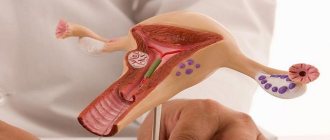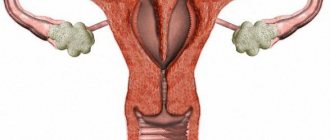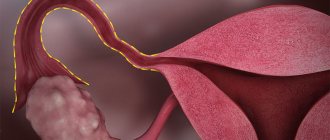Ureaplasma parvum is one of the types of ureaplasma, which are opportunistic bacteria . They are capable of being in the human body asymptomatically, and living in the epithelial cells of the vaginal mucosa and urinary tract, as well as on the surface of sperm.
Urea serves as a nutrient substrate for these microbes, which is why they populate the genitourinary system. Currently, ureaplasmas (from the Latin Urea - urea), belonging to the family of microplasmas (Mycoplasmataceae), are divided into 14 serotypes and 2 biovars that unite them - Ureaplasma parvum and Ureaplasma urealyticum.
What to do in such a situation? To get started, we recommend reading this article. This article describes in detail methods of controlling parasites. We also recommend that you consult a specialist. Read the article >>>
Ureaplasma parvum in women can cause the disease ureaplasmosis, associated with inflammation of the genitourinary system. Infection occurs mainly through sexual contact. The source of infection can be either a sick person or simply a carrier of Ureaplasma parvum.
Causes
Among the causes and various predisposing factors for the occurrence of the infectious process are:
- chronic inflammation of the genitourinary system;
- frequent respiratory infections;
- surgeries on the pelvic organs;
- frequent therapeutic and diagnostic measures (catheterization, instillations, endoscopic examinations);
- long-term drug therapy;
- sexual infections;
- vaginal dysbiosis.
All these factors in one way or another affect the vaginal microflora and contribute to a decrease in immunity. At risk are not only women, but also men with autoimmune diseases, severe damage and kidney failure due to pyelonephritis and nephritis. Given the many causes of infection, it is important to eliminate the direct factor causing the disease.
What danger does ureaplasmosis pose to women?
Consequences of ureaplasmosis for women
Undoubtedly, any disease requires treatment from a specialist, but the insidiousness of ureaplasma is that for a long time the infection does not manifest itself in any way and does not make itself felt. Mild symptoms that arise quickly disappear, which makes the woman think that everything is fine.
Exacerbation of a chronic disease is usually provoked by predisposing factors:
- cold;
- alcohol consumption;
- psycho-emotional overload and stress;
- physical overload and chronic fatigue.
Despite the fact that the infection is often asymptomatic, the consequences of ureaplasmosis in women can be quite serious.
| Complications of ureaplasmosis in women | How it manifests itself |
| Spread of the pathogen to neighboring organs and systems | Progressive, untreated ureaplasmosis for a long time spreads to the urinary organs, cervical canal and cervix, uterus and ovaries. This leads to the development of chronic inflammatory processes - urethritis, cystitis, cervicitis, endometritis, adnexitis |
| Difficulties with pregnancy | Ureaplasma itself in a woman’s body does not prevent pregnancy, however, activation of the pathogen and its rapid reproduction leads to damage to the cervix, which makes its tissue loose and weak. Such changes often provoke the threat of miscarriage, isthmic-cervical insufficiency, spontaneous abortion, premature birth |
| Addition of concomitant infections | Due to a decrease in local immunity, fungi of the genus Candida, chlamydia, and gadrenella are often associated with ureaplasma |
Important! Weakened local immunity and the presence of a chronic pathological process in a woman’s body make her vulnerable to the development of serious diseases, for example, HIV infection and AIDS.
Clinical manifestations
Symptoms of the disease vary greatly, and the infection usually occurs latently. Ureaplasma parvum in most cases provokes the occurrence of an inflammatory process. The main localization is the organs of the genitourinary system.
- copious discharge of mucus and pus from the cervical canal (this symptom also occurs in the case of gardnerella infection);
- dysuric disorders;
- pain in the lower abdomen;
- increased pain during menstruation;
- swelling of the mucous membranes of the urethra and vagina;
- signs of intoxication: hyperthermia, malaise.
Often, Ureaplasma parvum has a long latent course, so the disease is discovered by chance. Women are recommended to undergo regular preventive examinations, aimed in particular at identifying pathogenic environments. Ureaplasma plays a special role during the conception of a child and throughout the entire gestational period - when pathogens are detected, it is important to undergo timely therapy.
If clinical manifestations are ignored, inflammation of the ovaries, uterine cavity, and infertility may develop. When ureaplasmosis occurs in men, sperm motility is disrupted and the body's resistance is suppressed.
Consequences for men
In men, ureaplasmosis begins to appear approximately a month after the onset of the pathogenic action of the bacterium. The first symptoms are:
- Cloudy discharge from the urethra. In the initial stages they may not be noticed by the patient. A small drop of discharge does not leave any traces on the laundry, so it is difficult to notice.
- Slight itching of the entire urethra.
If a person does not pay enough attention to his body and does not listen to its signals, the disease can lead to complications and spread to the prostate gland with the following development of the clinical picture:
- Increased body temperature as a result of infection.
- Severe pain in the perineum and groin area.
- Difficulty urinating. Because the urethra passes through the prostate in men, inflammation of the urethra narrows the passage, causing the man to be unable to empty his bladder completely. This leads to frequent urination, especially at night.
- In severe cases, purulent discharge appears from the urethra.
- The most dangerous complication of prostatitis is that a pathogenic bacterium enters the blood and leads to sepsis. At this time, doctors do not think about the state of the patient’s genitourinary system and try to do at least something in the intensive care unit.
Consequences of untreated ureaplasma:
- impaired urination, which requires significant effort from the patient;
- infertility, as a result of the fact that sperm do not have sufficient motility;
- In rare cases, ureaplasmosis destroys the joints, causing them to become inflamed.
Why is it dangerous?
Ureaplasmosis affects women 2 times more often than men.
The pathogen can cause the following female diseases:
- Inflammatory processes in the cervix - cervicitis, vaginal mucosa - colpitis, ovaries and appendages;
- Predisposition to cancer;
- Pathologies of the urinary organs;
- Problems during pregnancy.
Therefore, when planning conception, be sure to undergo tests to detect common infections, including Ureaplasma parvum.
Diagnostic measures
The main method of diagnosing the disease is laboratory. It may include inoculation of material on nutrient media, PCR, and serological testing. For bacteriological examination, the material used is vaginal secretions, cervical secretions, and a smear from the urethra.
Treatment is determined by the number of colonies formed (CFU). The polymerase chain reaction is widely used. It allows you to detect the genome of the infectious agent. This method is auxiliary. An available method for diagnosing ureaplasmosis is enzyme immunoassay. It allows you to detect antibodies to the pathogen in the blood. Interviewing the patient is of no small importance in making a diagnosis. During this process, it is possible to establish the fact of casual sex and suspect the presence of an STI.
Analyzes
Diagnosis of ureaplasmosis, namely, testing for urealyticum and parvum species, is recommended for women who have suffered inflammation of the appendages and uterus (endometritis), suffering from miscarriage and infertility, cervical erosion and menstrual dysfunction, as well as those suffering from chronic colpitis.
As part of a gynecological examination of virgin girls and adolescents, gynecologists take a test for ureaplasma (culture, smear, quantitative PCR and blood tests) if there are complaints of excessive discharge and discomfort in the intimate area.
There are several generally accepted research methods. The main tests for ureaplasma in women include:
- Culture of the microbe with determination of titer and selection of antibiotics,
- Determination of antibodies in blood tests for ureaplasma urealiticum,
- Complex floracoenosis,
- PCR (DNA) method (qualitative and quantitative).
A high percentage of reliability of the result is achieved by the simultaneous use of such tests for urealiticum and parvum species - PCR, blood for antibodies, culture for quantity and sensitivity to antibiotics. Below you can see a list of methods and prices for testing for ureaplasma in women and men. They can also be taken from children and teenage girls.
Diagnosis of ureaplasma
What tests need to be taken for ureaplasmosis and their cost, ₽
| List of tests | Price |
| PCR qualitative | 450 |
| PCR quantitative | 850 |
| Florocenosis | 3 500 |
| Crops | 1 750 |
| Blood analysis | |
| IgA antibodies | 750 |
| IgG antibodies | 750 |
| IgM antibodies | 750 |
How to treat ureaplasmosis
In women, treatment of ureaplasma infection should be carried out comprehensively using antibiotics to which the microorganism is sensitive, local procedures, vitamin therapy, and immunomodulator drugs. It is difficult to overestimate the auxiliary role of physiotherapeutic procedures. In this case, not chemical factors (medicines) are used, but physical ones: currents, magnetic fields, laser, ultrasound, etc.
As you know, infection is often present in tests in girls suffering from chronic adnexitis, adhesions of the pelvic organs, dysfunctional bleeding, etc. Therefore, various treatment methods in gynecology undoubtedly have a positive effect on the effectiveness of the entire course. The specific factor is selected individually, depending on age and existing gynecological diseases. At the following link you can see the answer to the question whether ureaplasma needs to be treated or not.
An effective treatment regimen for ureaplasmosis in women should include:
- Antibiotics to which Ureaplasma urealyticum and Ureaplasma parvum are sensitive;
- Antifungal drugs to prevent thrush;
- Enzymes that enhance the effectiveness of antimicrobial agents;
- Local treatment (sanitation of the vulva and vagina);
- Vaginal suppositories;
- Immunomodulators;
- Auxiliary techniques (physiotherapy, gynecological massage, mud tampons, etc.).
After completing the course, repeated control examinations for ureaplasma are recommended. In women, sometimes the symptoms of the disease go away quickly and without long-term medical intervention. Some people may subsequently experience relapses, while others will not, but the reasons for this are not yet clear. Therefore, ureaplasmosis continues to remain one of the most incomprehensible and mysterious diseases for doctors.
Methods of infection with ureaplasmosis
Routes of infection for ureaplasmosis
How can a woman become infected with ureaplasmosis? This most often occurs during sexual contact with an infected partner. A little less often, ureaplasma enters the body during oral sex - in this case, the mucous membranes of the oropharynx and larynx are affected, from which the patient will suffer from pharyngitis, tonsillitis, tonsillitis and laryngitis.
How does ureaplasmosis spread from a pregnant woman to her child?
If the expectant mother was sick with ureaplasmosis or was a carrier of this infection, then the fetus may become infected when passing through the birth canal. In most cases, ureaplasma is localized in the vagina, but as the infection progresses, the pathogen can penetrate the cervix, uterus and its appendages, which poses a threat to the health of the fetus and causes intrauterine infection.
Clinical signs of the disease
Abdominal pain (photo)
The incubation period of ureaplasmosis in women is about 1 month, sometimes a little less. If the immune system is weakened or a woman has concomitant reproductive diseases, then 30 days after infection, mild clinical signs may appear:
- abundant mucus from the vagina - discharge from ureaplasmosis in women does not have any unpleasant odor or impurities, the presence of an unpleasant odor, pus or bloody streaks indicates the presence of concomitant sexually transmitted infections
- burning when emptying the bladder – when ureaplasma spreads to the urethra and bladder, clinical symptoms of cystitis and urethritis occur;
- discomfort during sexual intercourse;
- the addition of concomitant diseases - hardrenellosis, candidiasis, chlamydia, mycoplasmosis, which is associated with a decrease in local immunity.
Burning in the lower abdomen
Often ureaplasmosis occurs in parallel with other infections - mycoplasmosis, hadrenellosis, chlamydia.
In this case, the clinical symptoms will be more pronounced, and the woman notes the following signs:
- the appearance of copious gray discharge from the genital tract with an unpleasant fishy odor;
- itching of the genitals;
- swelling of the external genitalia due to constant weeping;
- menstrual irregularities;
- pain in the lower abdomen;
- problems with carrying a pregnancy (if it is not planned).
You can learn more about how ureaplasmosis manifests itself in women from the video in this article.
Treatment
For ureaplasmosis, it is necessary to take antibiotics, anti-inflammatory drugs, immunostimulants and vitamins. Patients are prescribed antibacterial drugs (Fluoroquinol, Tetracycline, Sumamed, Ofloxacin, Azithromycin). It is also necessary to strengthen the immune system; for this, immunomodulators are taken (Lysozyme, Timalin, Taquitin).
The treatment regimen for ureaplasmosis involves the prescription of Ortofen, Ibuprofen and Diclofenac. These drugs have an anti-inflammatory effect. For complex therapy, physiotherapy is used - treatment with baths and mud.
For subsequent exacerbations, the patient is prescribed other antibiotics. Ureaplasmosis bacteria very quickly adapt to antimicrobial drugs, so the treatment regimen needs to be regularly adjusted with each exacerbation, implying the use of more effective medications.
In order not to carry out treatment, which will require a lot of time and money, competent and timely prevention of the disease is necessary. You need to follow basic rules of personal hygiene and use condoms.
There is an opinion that it is impossible to cure ureaplasmosis, since after treatment the bacteria can attach to the walls of the genitourinary organs and wait for conditions to activate.
In gynecology, it is believed that if a microorganism is detected without corresponding symptoms, the disease does not require therapy. But even with an asymptomatic course of the disease, a person poses a threat to others.
Use of folk remedies
This disease can be fought with folk remedies. To reduce itching, tinctures of oak bark, chamomile or calendula are recommended. To prepare such a folk remedy you need 4 tbsp. l. pour 1 liter of boiled water into the mixture of herbs. After this, the composition must be filtered and applied 2 times a day. You can also use the infusion to wash the genitals.
To restore microflora, a decoction of goldenrod is suitable. To prepare it you need 2 tbsp. l. herbs pour 1/2 liter of boiling water and leave. This folk remedy can be used as tea. Immunostimulating herbal teas based on echinacea and rose hips help strengthen the immune system.
It is possible to defeat parasites!
Antiparasitic Complex® - Reliable and safe removal of parasites in 21 days!
- The composition includes only natural ingredients;
- Does not cause side effects;
- Absolutely safe;
- Protects the liver, heart, lungs, stomach, skin from parasites;
- Removes waste products of parasites from the body.
- Effectively destroys most types of helminths in 21 days.
There is now a preferential program for free packaging. Read expert opinion.
Interesting to know:











